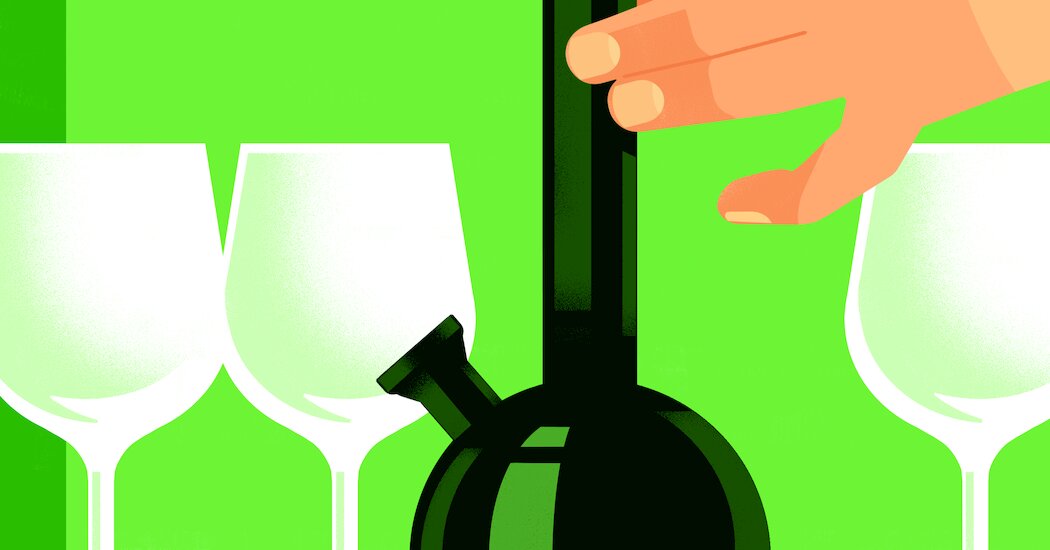
Mr. Mahle likes to use Rhône grapes like grenache or mourvèdre, and he prefers to make a rosé.
“I only wanted a rosé,” he said. “Red wine didn’t make sense to me. It seemed like kind of a sundowner sip.”
On a recent visit to Mr. Mahle in Sebastopol, where he is based, I tasted two of his weed wines, a 2015 grenache rosé, a gentle, herbal wine, and a 2013 mourvèdre rosé, herbal, minty and mineral. I thought the 2013 was especially delicious and showed how well these wines could age. The buzz? I confess, I spit the wines so did not experience the full effect. It seemed the professional thing to do, particularly at 9:30 in the morning.
Mr. Lindquist, too, makes a grenache rosé, but especially enjoys a syrah-based dark rosé.
“It has a beautiful color and a lot of bold, meaty, smoky characteristics,” he said. He also likes white versions made with marsanne or viognier.
As for the variety of weed, in the old days it was hard to be too specific, but now, after legalization, which has made so many different strains available, he has options. He prefers Cherry Pie, a hybrid strain of indica and sativa, the two main species of cannabis. He grows it himself — up to six plants for home use is legal in California — and believes it is predominantly sativa, which is said to produce a more energetic high than indica.
“I’m guessing there’s no regulation of what Cherry Pie is supposed to be,” he said.
Mr. Lindquist said he likes to make a barrel or two every other year, and he remains an enthusiast, drinking it a couple of times a month, “depending on who we have over to dinner.” He made a rosé in 2021 and plans to make a marsanne this year. Now, he said, his weed wines are legal: “It amounts to a home winemaker making it.” And if federal regulations ever changed, he might consider selling his weed wines commercially.



